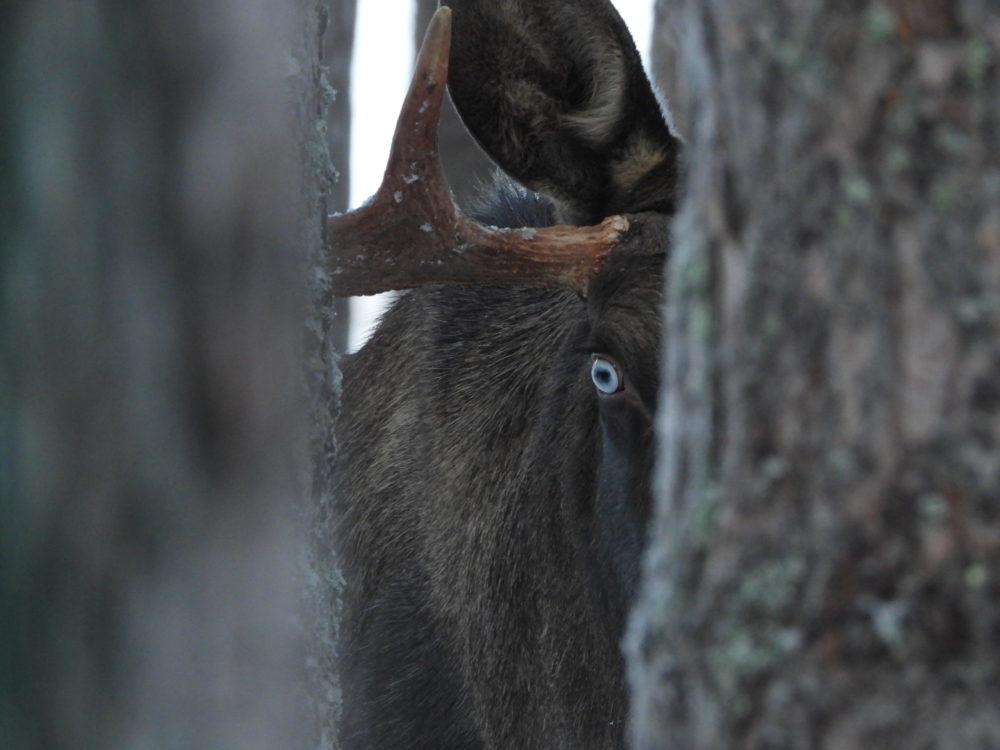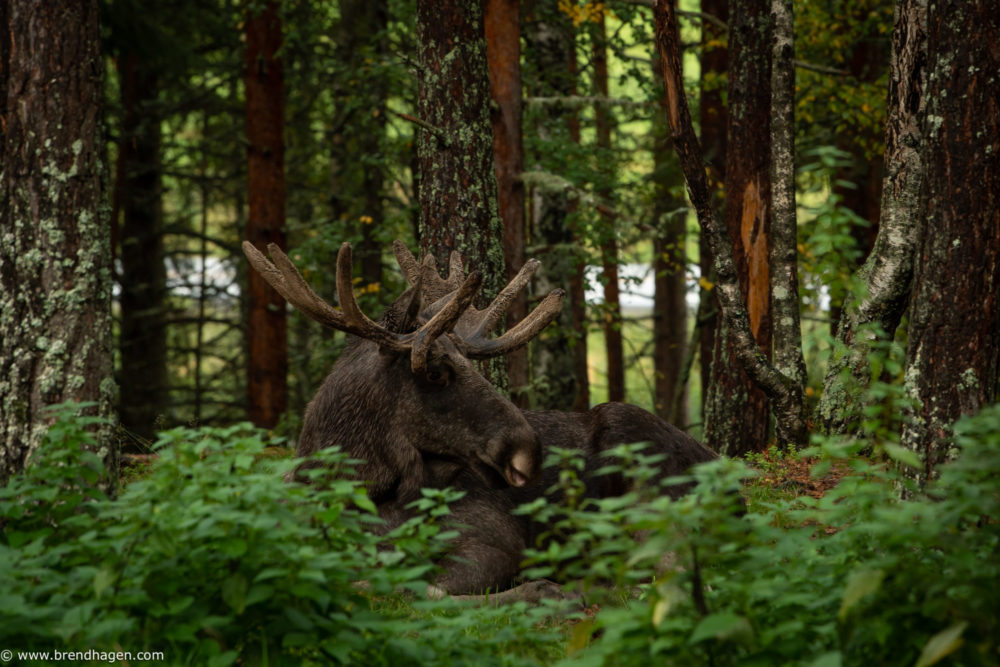Moose
The moose, or elk, is the largest animal we have on the Norwegian mainland. A fully grown bull can weigh as much as 700 kg and stand over two metres tall at the shoulder! It is no surprise, perhaps, that it has been nicknamed the king of the forest! The male moose is called a bull, while the female is a cow and the young are calves. In days gone by, it was believed in many places that the moose was the cow of a Hulder, a seductive forest creature found in Norwegian folklore.
Moose
Latin: Alces alces
Family: Deer (Cervidae)
Height: 140 – 200 cm
Weight: 300 – 550 (average)
Breeding season: September – October
Number of calves: 1 – 3
Lifespan: 15 – 25 years
Elgsporet
The moose is a big, heavy animal and therefore leaves clear tracks. Its large hooves are long and end in a point. The dew claws at the back are usually readily visible in the tracks.
How does the moose live?
The moose is a solitary animal, meaning that it lives alone. Cows (females) with calves are the exception.
Moose breeding season lasts from mid-September until the end of October. This is when the bulls are at their most handsome. Their antlers are fully grown for impressing the females, and the bull will perfume himself by rolling in mud holes that he has urinated in. These are called ‘rut holes’. During this period, moose bulls are aggressive towards other bulls and will try to chase off competitors. The bull wants to have the females to himself and will try to mate with as many cows as possible.
If a cow becomes pregnant, the calves will be born after around 230 days. This means that they are normally born in May or June, which is the time of year when good food is most readily available. This provides the best conditions for both the mother and calves to thrive.
Mothers will keep their calves with them for a year, that is to say until she is ready to give birth to new calves. Then the calves will be chased off and have to fend for themselves.
What does the moose eat?
The moose is a herbivore. In winter, it eats twigs, buds and tree bark. It eats a lot of spruce and birch in particular, but rowan, aspen and willow are it’s favourite food.
It’s diet is a bit more varied in summer, when it eats leaves from the same trees, but can also graze on heather, herbs and aquatic plants. When the moose is eating it’s dry winter diet, its droppings will be the usual balls that most people recognise as moose droppings. There is much more water in the moose’s food in summer and it’s droppings are more like cow pats, and these are often mistaken for a bear’s dropping by many untrained hikers.

Where does the moose live?
The moose is a forest animal that is found in most of the country. In places where food is plentiful all year round, the moose will live in a very small area of just a few square kilometres.
Where there is more variation in the food supply between summer and winter, the moose will move between summer and winter grazing. There can be more than 100 kilometres between the different grazing areas, with the journey being made in spring and autumn. Swimming across rivers, or even long stretches of the sea to reach islands or other sides of the fjord/valley are common occurances.

How many moose do we have in Norway?
We do not have exact figures for Norway’s moose population. But estimates have been made and the indications are that we have around 120,000 – 150,000 moose.
In the last few decades, there have been more moose than ever before. This is both because we hunt in such a way that the animals that produce most calves are left, and because the moose has relatively few natural enemies now that the country’s large carnivore numbers are so low.

Is the moose dangerous?
The moose is basically a peaceful animal that prefers not to have anything to do with us. But if you encounter a cow with calves, it is wise to withdraw. This is because it could want to defend it’s calf against anything that might be a threat! Otherwise, it is safe to hike in the woods even if there are moose there. This doesn’t mean that we humans should approach a lone moose – it is a large animal that can misinterpret your intentions and try to scare you away by charging. As with all wild animals we should respect them and interfere as little as possible.
The moose is most dangerous for us humans when it runs out into traffic and could be hit by a vehicle. This large animal can do enormous damage to both cars and the people inside them in a collision. It is therefore very important to drive carefully in areas with a lot of moose. Signs have been put up along roads to warn drivers about moose, and you would be wise to watch your speed if you see such a sign.